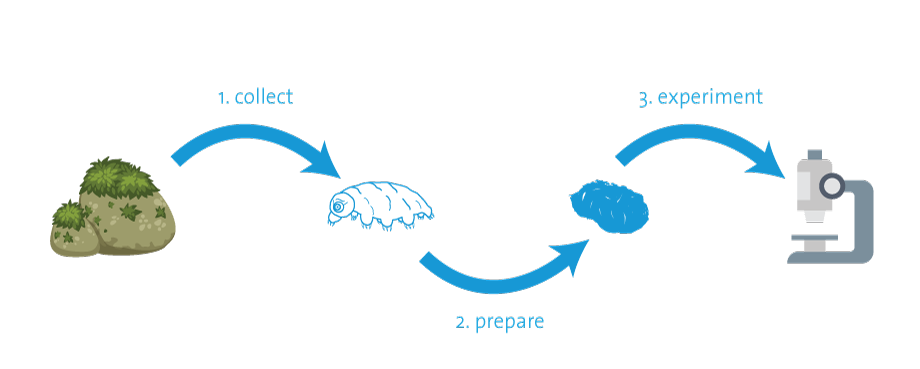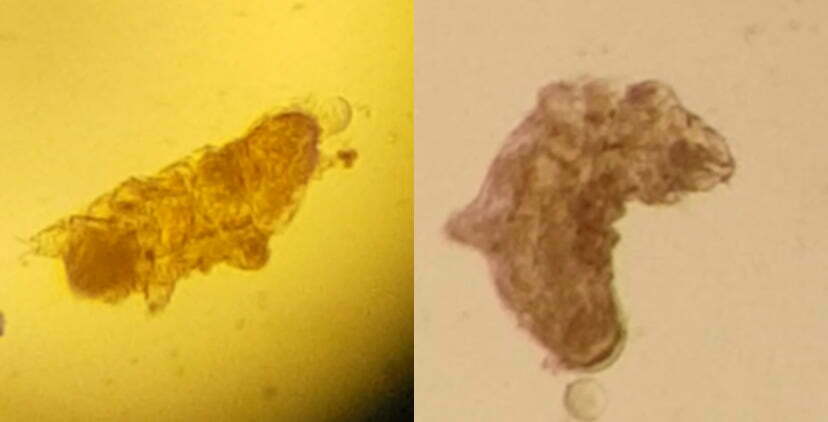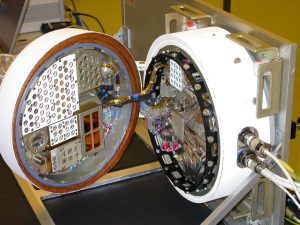Space Bears – Lab-experience with Tardigrades
In this set of experimental activities, students will investigate the survival abilities of tardigrades, also known as water bears.
They will expose conditions and come to a conclusion about which environments they can survive in. The aim of this resource is to test tardigrades’ resilience to extreme environmental conditions and link their survival ability to the space environment.
Before beginning this activity, we suggest that you complete the activity “Could life survive in alien environments?” which provides an introduction to life in extreme environments.
Learning Objectives:
Age range:
12 – 16 years old
Time
Lesson: 2 hours and 20 minutes
Resource available in:
Activity 1: Collecting the tardigrades
In this activity, students will learn how and where they can collect tardigrades. They will carry out these steps and prepare tardigrade samples for the following activities.

Equipment
Activity 2: Sending tardigrades to sleep
In this activity, students will transfer their tardigrades to small containers and induce anhydrobiosis by leaving them to desiccate. Students should understand that tardigrades will enter a new metabolic state, in response to the adverse environmental conditions. It is essential that tardigrades enter this tun state in order to survive these extreme environmental conditions.
Equipment
Activity 3: Can they endure? Performing the experiments
In this activity, students will expose the dried-in samples to different conditions, simulating extreme environments.

Equipment
Activity 4: Tardigrades in space
In this activity, students will link the experiments they completed to the quest to find life elsewhere in the Universe.
Equipment
Did you know?
In 2007, as part of ESA’s Tardigrades in Space (TARDIS) experiment, 3000 tardigrades were taken into space.
They were exposed to the vacuum of space for 12 days where they experienced extreme dehydration, alongside high levels of cosmic radiation, and survived!
They were exposed to the vacuum of space for 12 days where they experienced extreme dehydration, alongside high levels of cosmic radiation, and survived!

Biopan, the small container that hosted tardigrades in space
Keywords:

AstroFarmer – Learning about conditions for plant growth
Brief description: In this set of six activities, students will investigate which factors affect plant growth, and relate these factors to growing plants in space.

Could life survive in alien environments? – Defining environments suitable for life
Brief description: In this activity, students will consider whether life found in extreme environments on Earth could survive elsewhere in the Solar System. Students will

Power from Sunlight – Powering space exploration with solar energy
Brief description: In this set of activities, students will learn about two concepts that influence solar panel design for space missions: the inverse square law



